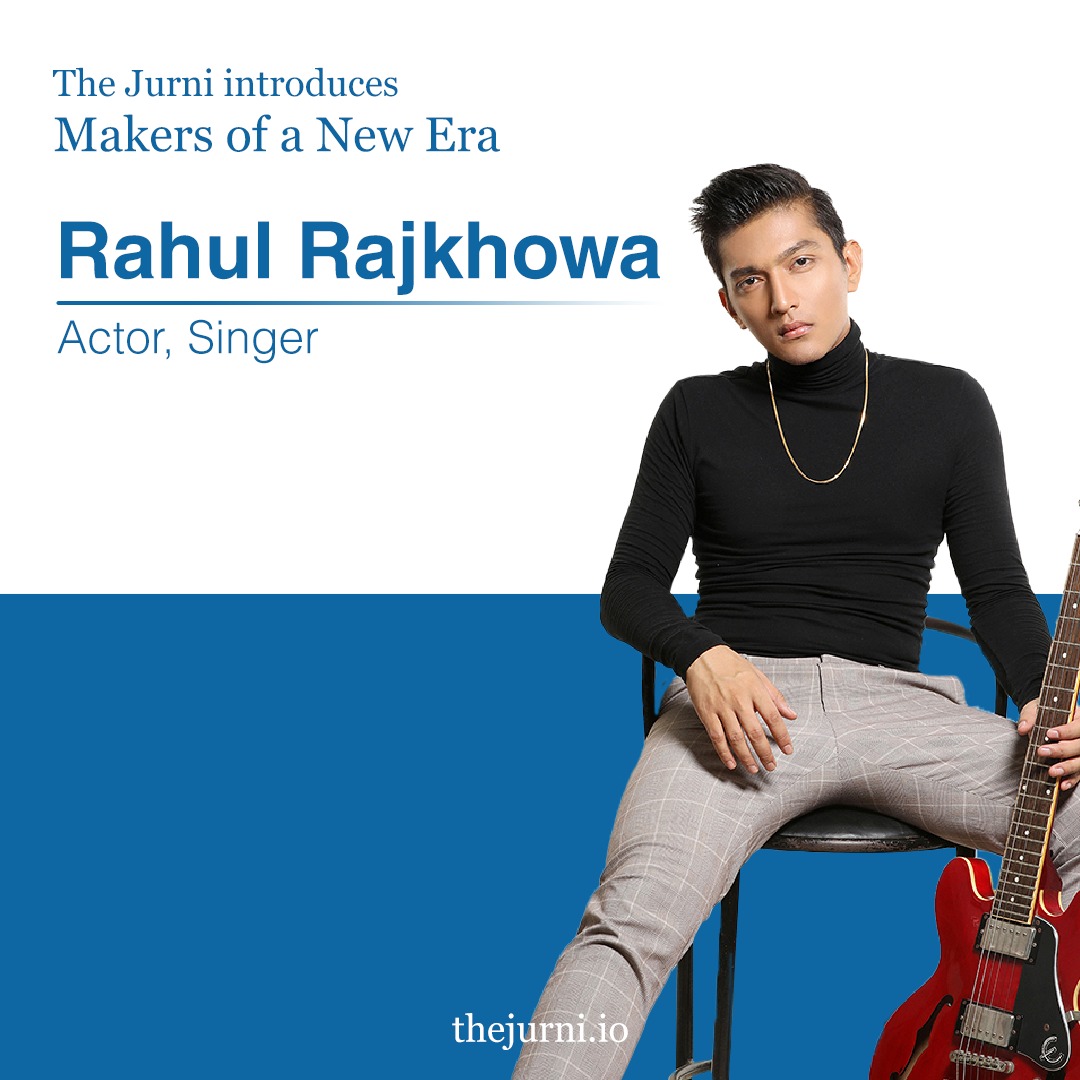
Thank you for joining us today. You have had a very interesting and unique career trajectory. Did you always imagine yourself as a creator/performer? And what or who inspired you?
My interest in movies started at home. My dad worked on the production team of many films, while my mom used to work as a scriptwriter and sound engineer. So, the culture of appreciating films and theatre was a big part of growing up – our parents would tuck us in bed and watch movies the whole night.
My interest in music, on the other hand, started in school. I grew up in a boarding school, The Assam Valley School, where we would get to watch TV only on the weekends. We would all sit and watch the Billboard Top 20 show on Star World on Sundays, where we got to see several bands perform on TV. Watching them, I felt inspired to take up music as well.
We formed a band in school, and would perform at festivals, even winning several competitions across the country. I always wanted to know what happens after you perform at the school stage though: Where does this career take you? How can I also be on TV?
My friends and teachers were very supportive throughout this journey, and always told me that I could definitely pursue a career in music and become a performer one day.
How did this journey continue into your band Paperboat?
When I entered Delhi University after school, I realised how strong and supportive the music circuit here was. I was lucky to get to play the guitar with my seniors in their performances, and was even a part of the acapella choir, which helped expand my vocal range.
During my last year of college, my friends and I started Paperboat together. We performed at many college fests – our biggest was when we won the IIT Kanpur fest – and later even at the famous Grub Fest in Delhi.
I think the Delhi University circuit really helped us become what we are. One thing I want to point out is that most of the people making it big in the music industry today have come out of Delhi University.
Where do you come up with the best ideas for your music -- by yourself jamming, relaxed somewhere, out with friends?
The protest rap I performed comes from what I see in front of me. The CAA protests and my views on the situation at hand made me write rap music. I got a lot of slander for rapping the way I do and many even said I should do slam poetry and not rap, but I did it because it helped me truly express my feelings towards a particular issue.
In terms of my other music, I listen to several genres and draw inspiration from them. I constantly wonder - how can I play this particular tune in a certain way? Jamming with other artists on tour is definitely one very productive way to create music. If you meet the right energies at the right place, you can create wonders.
In March 2021 for instance, I had the opportunity to join the Gully Gang camp in Goa organised by Divine and his record label. We came up with some amazing music there, and several songs composed during that camp are underway this year.
What effect did the pandemic have on your creativity and your ability to produce?
The pandemic was necessary. It helped me pause and focus on writing music. The constant travel across the country for shows before that always kept me busy, because of which I had little time to work on my music.
I collaborated with many artists from across the world during this time – from the US, UK, Europe, and many other countries. Clubhouse also really helped in reaching out to some cool people and creating great music with them, virtually.
Honestly, I think we were more connected than ever during the pandemic.
You are also an actor. You worked with Ayushman Khurana in ‘Beewakoofiyan’, and also have a new film coming out this Friday. Please tell us more about it – what is it about, and what made you take on this specific role?
Ayushman Khurana’s manager Rani is someone I’m very close to. She knew someone who was looking for an actor who could also sing and play music. Seeing as how the role brought all my interests and talents together, I auditioned for the part and bagged it.
The movie, Side A Side B, was shot in 2016. It was screened a year later at the New York Film Festival, which really supports and encourages experimental cinema. It is a heartwarming tale about ‘the first relationship’ that never worked out, and probably also the most unique project I’ve ever worked on – it is a musical which was shot completely on an iPhone, while on a train journey from Guwahati to Bombay. It was really difficult to shoot this film as we were in a moving train, rolling continuously for 48 hours. But the team was fantastic – Jojo Chaki, who has worked on over 300 films, was the sound engineer. And the film has been directed by Sudhish Kamath who is one of India’s most noted film critics.
The film releases on the 11th of Feb on T-Series YouTube channel.
You are also embarking now upon another exciting endeavour – as Visiting Professor of Arts Appreciation at Indian Institute of Management, Ranchi. How can an understanding of the arts help people?
Art appreciation is very important. If you can appreciate art, I think it makes you a better human being. It gives more meaning to life.
People are so worried about their past or their future that they don’t have a moment to spare in their present and appreciate the world around them. Even if you go to a museum, you just click photos and move on to the next thing. Not a lot of people actually want to take a moment and understand what is behind the making of a piece of art. Are you really living if you cannot appreciate the art around you?
What advice would you give aspiring professionals who want to develop such an understanding, or even embark on a career in the arts?
The world is changing and everyone is moving towards a more multi-disciplinary approach to life. For instance, I have students who studied Chemistry and are now pursuing their Bachelors in History at Stanford.
Art and Design education is extremely important for people to understand the world around them better. In fact, being able to appreciate art even helps make better connections with people, when you converse with them.
My advice would be to follow your heart and not give in to any societal constructs. Everything eventually does fall into place.
What in your opinion is the most underrated place to travel to in the world and why?
I visited Chiang Mai in Thailand for a performance on invitation from the Consulate, and that has to be one of the most beautiful places I’ve ever visited. The northern hills of Thailand just reminded me of a very fancy Shillong. On the other hand, the Buddhist monasteries, and the food they eat really made me appreciate vegetarian food!
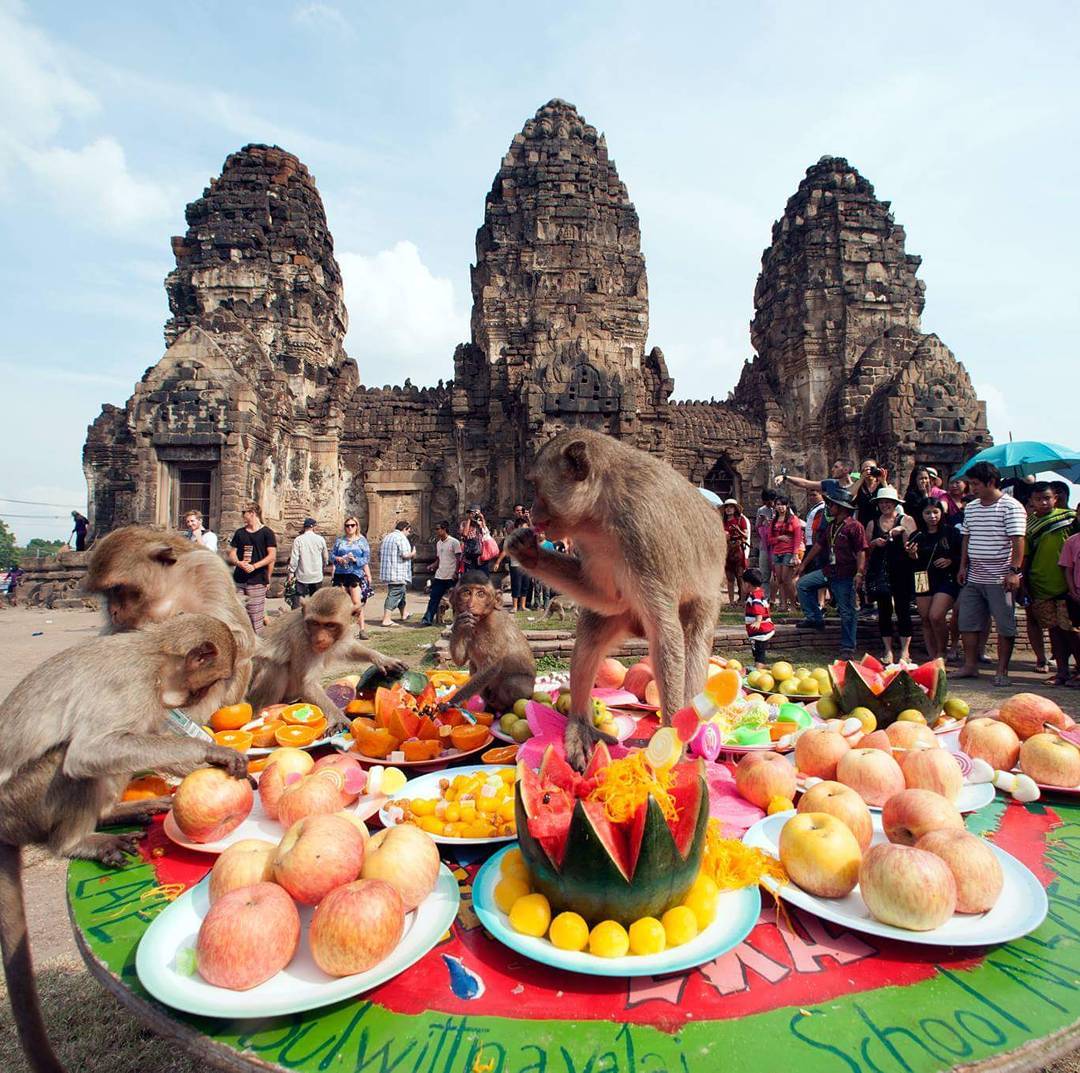
Monkey Buffet Festival
On the last Sunday of November, a lavish banquet is laid down among the ruins of the Phra Prang Sam Yot temple in Lopburi, Thailand. Fresh fruits and vegetables are served to honour the guests in hopes of receiving their blessings. What makes this celebration unique is that the guests are not humans but monkeys -- macaques, to be precise.
How did this tradition come to be? It is believed that these gregarious Old World monkeys bring good luck to the area and its people. So, the feast started back in 1989, with a local resident who wanted to honour the simian population. Over the years, this simple act has taken the shape of a full-blown carnival with dancers in monkey costumes and more.
Being one of the oldest and most historic cities in Thailand, Lopburi has caught the interest of travellers who flock in large numbers to this city to witness this unique event. Tourism has thus become central to Lopburi, a city which boasts of countless ancient sites dating from varied civilizations and dynasties.
Apart from bringing prosperity and luck to the region, this festival is evidently a one-of-a-kind spectacle to witness.
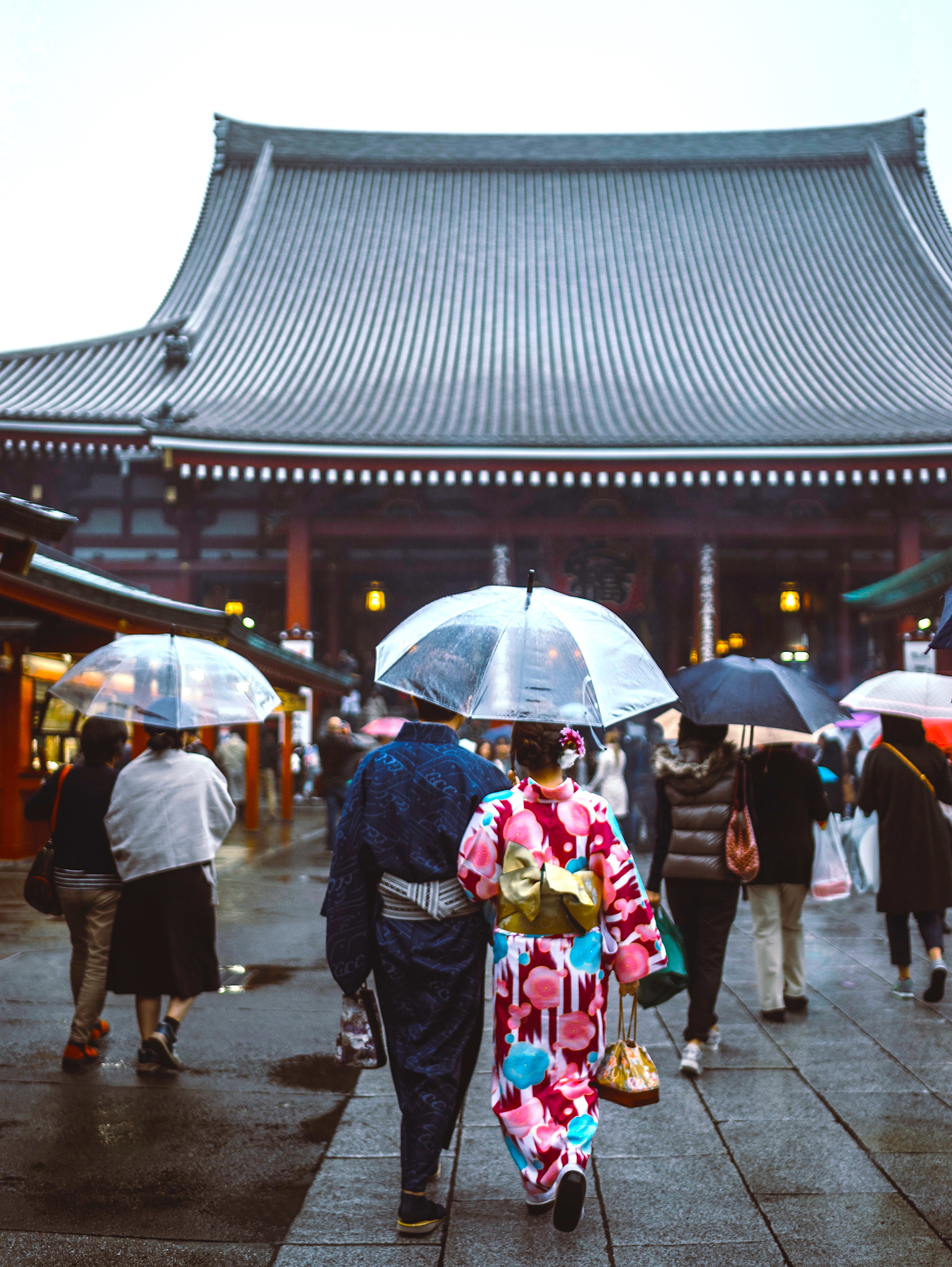
Rent-a-Man in Japan
How many times have you missed trying out a new restaurant or watching the latest flick at the theatre because you had no one to accompany you? While solo luncheons and dates with yourself are emerging as a popular way of reclaiming ‘me-time’ around the globe, there’s a parallel option available in the cities of Japan that has raised some eyebrows before melting hearts.
This is the service of renting a person – for reasons that vary from simply wanting company for lunch, or saving face at a social event where plus-ones are expected (how we relate to that!), to even needing moral support during difficult times. Like in the case of Akari Shirai, who wanted to visit her favourite restaurant in Tokyo before leaving the city after her divorce.
She opted to hire Shoji Morimoto, a man who is popular for doing nothing. “I felt like I was with someone but at the same time felt like I wasn’t… I felt no awkwardness or pressure to speak. It may have been the first time I’ve eaten in complete silence,” Shirai told the Washington Post, adding that this was just what she needed.
The ‘rental-san’ who accompanied Shirai has inspired TV shows and books and gained a cult following in recent times. And several other rental-sans are enhancing the social dynamics of the country in different ways… which makes us wonder: would this work in any other region on the globe? Hit reply to share your thoughts!
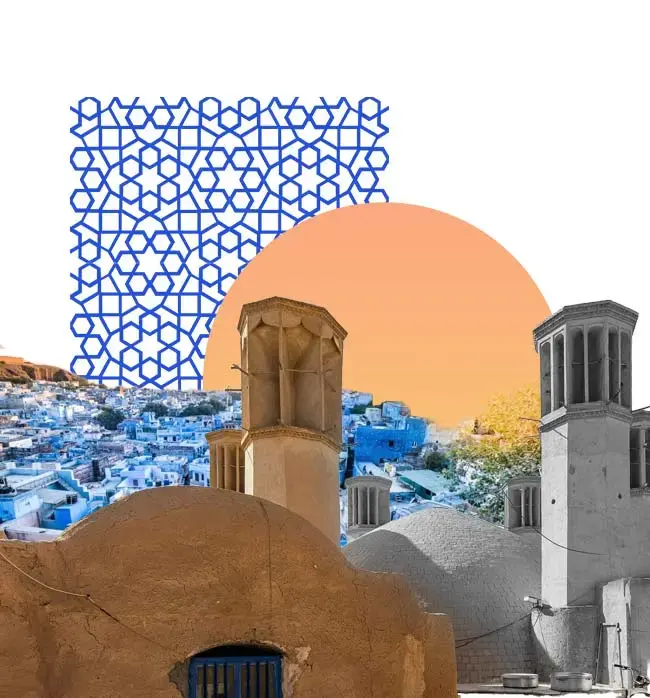
The Shape-Shifters
Feeling hot hot hot...? Summertime can be fun and cheery, but too much heat can be a killjoy – not to mention the impact it has on our one precious planet. As temperatures continue to rise around the globe, experts are trying their best to prevent 500 days of summer (nothing against the film). And, to do that, they have turned to innovations in urban engineering – where the biggest challenge is to make a city liveable and eco-friendly – as the primary strategy.
How are we going about it?
By borrowing from past traditions and innovating with futuristic insights. Architects and researchers are picking traditional architectural elements from around the globe – like the ‘skywells’ in China, badgirs or wind towers in Persia, jaali (a type of perforated block) in India, or mashrabiya or wooden lattice in the Middle East and North Africa – and finding ways to integrate them with modern technology. Although, they are still at a nascent stage.
Meanwhile…
Installing green roofs or painting both the roofs and walls of a house white (think: Rajasthan) has been one of the simpler and more economical strategies. New York City has painted over 6 mln sq ft of rooftops white to reflect the sun rather than absorb it, while Los Angeles has followed suit.
Similarly, a pilot project in Barcelona is developing a network of ‘climate shelters’ by integrating blue-green and grey infrastructures. Paris, on the other hand, has developed an interlinked network of “cool islands” where people can seek refuge – from parks and forests to swimming pools.
What next?
More innovations. These interventions are just the start. As climate continues to change, we can expect more experimentation and boundary-pushing technologies in architecture to help cool our warming cities – maybe even completely revolutionising the image we see when one utters the word urban design.
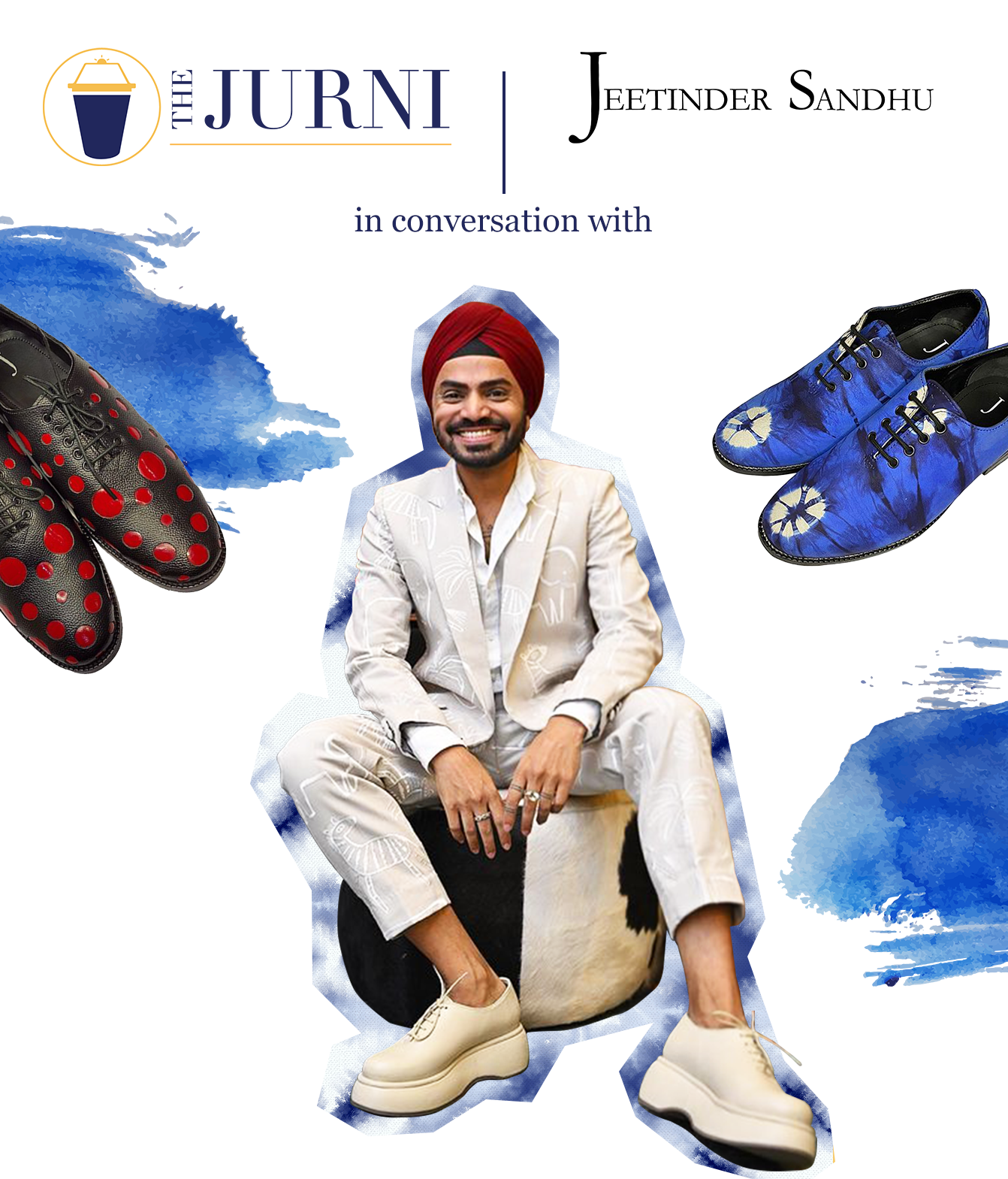
Indian Roots, Global Expressions: Jeetinder Sandhu's Vision for the Future of Fashion
In the world of haute couture, what does the ability to blend diverse cultures into breathtaking creations look like? The answer – Jeetinder Sandhu, the visionary fashion artist whose masterpieces epitomise the fusion of Indian heritage with a global flair.
With a storied background of living in Delhi, London, and Rome, Sandhu’s design sensibilities have been profoundly shaped by the cultural tapestry of each city. His gender-neutral approach to fashion celebrates individuality and self-expression, elevating his creations to a new level of inclusivity.
He sat down for an exclusive chat with The Jurni. Excerpts:
As a travel and culture newsletter, we appreciate how cities enhance our lives. Have you felt moved by any travel or culture experiences that ended up influencing your design sensibilities?
I have always been fond of travelling from a young age and have the ability to really immerse myself in and adapt to new cities and cultures. I have lived in the great city that is Delhi. I have also lived in London for close to seven years. And I lived in Rome as well. Each of these has been a cultural experience that is unique and each has influenced my design thinking in their own ways. They represent very diverse and different ways of life. Both Delhi and Rome have a long civilisational history and one finds the past and the present fuse into so many different aspects of life every day. London on the other hand is a fashion powerhouse and was instrumental in developing and influencing my design thinking when I was in my early days at university. It let me explore myself and identify my style, as well as how I wanted to express myself. Each city that I have lived in has been such an important part of my journey – in not just defining who I am today as a person, but also as a designer.
From brogues to loafers and embroidery to upcycled wall hangings – there is nothing we haven’t seen in your designs. Where do you draw your inspiration from?
I draw my inspiration from my Indian roots. The privilege of living in different parts of India and the opportunity to travel widely within the country has exposed me to the richness of Indian design, colours, and our heritage.
At the same time, the opportunity to witness the confluence of the best while living in London and Rome helped me understand the latest trends in the fashion industry. It is the mixture of the Indian with the global and the past with the present that has been a dominant part of my fashion journey. At some point I have started to think of sustainability as well. Given the extremely rich history of textiles in our country, it was almost natural for me to adapt to them and upcycle to create one of a kind products. I want to showcase the varied and diverse levels of craftsmanship and skills that India has and present it to a global audience.
Your creations are as much rooted in Indian craftsmanship as they are funky and modern. What do you think fashion design means for the 21st century Indian millennial?
The country is on a strong growth and development path. In a manner of speaking, it is almost as if as a nation, we are coming of age and starting to take our place on the global stage. For fashion, this means a certain boldness in expression, a strong sense of identification with Indian-ness. As a generation that has been exposed to so many western influences in lifestyle and clothing, we have created our own versions of design. We are rooted, exposed, aware, and proud. And, having easier access to express ourselves is what has helped an entire generation of designers to truly define and represent a well-rounded idea of the phrase ‘East meets West’. I feel it is important to view oneself as a global citizen when it comes to creating and designing products, but also, at the same time, it is about being aware and proud of where you come from and how you express who you are in a global language and market.
In a world that is moving towards gender-fluid ideas, what has been your experience of situating your shoes in a unique, un-gendered space?
I have always believed in a gender neutral approach to fashion and design. Products aren’t made for genders, they are made for people. Categorising and placing items based on genders is an outdated concept and it is restrictive when it comes to exploring design and style. We cater to all genders and our customers appreciate and understand that approach.
Is there a travel experience that you’d like to take part in that piques your interest?
Having worked so closely with vibrant colors and prints from India and having an extreme fondness for the artisanal approach to fashion, I feel Africa is a continent that I would like to travel to and explore next. Several African countries, much like India, find themselves on the global fashion stage as major markets now. This trend is certainly worth exploring, understanding and taking inspiration from to adapt to one's own work.
Going forward, what are some goals for your brand? What can we expect from Jeetinder Sandhu?
Jeetinder Sandhu has been on a quest to be the brand for all things accessories. Be it shoes, jewellery, home objects, or other small leather goods, I want to tap into various other product categories and be considered as a premium label for all things small, unique, eccentric and bespoke.
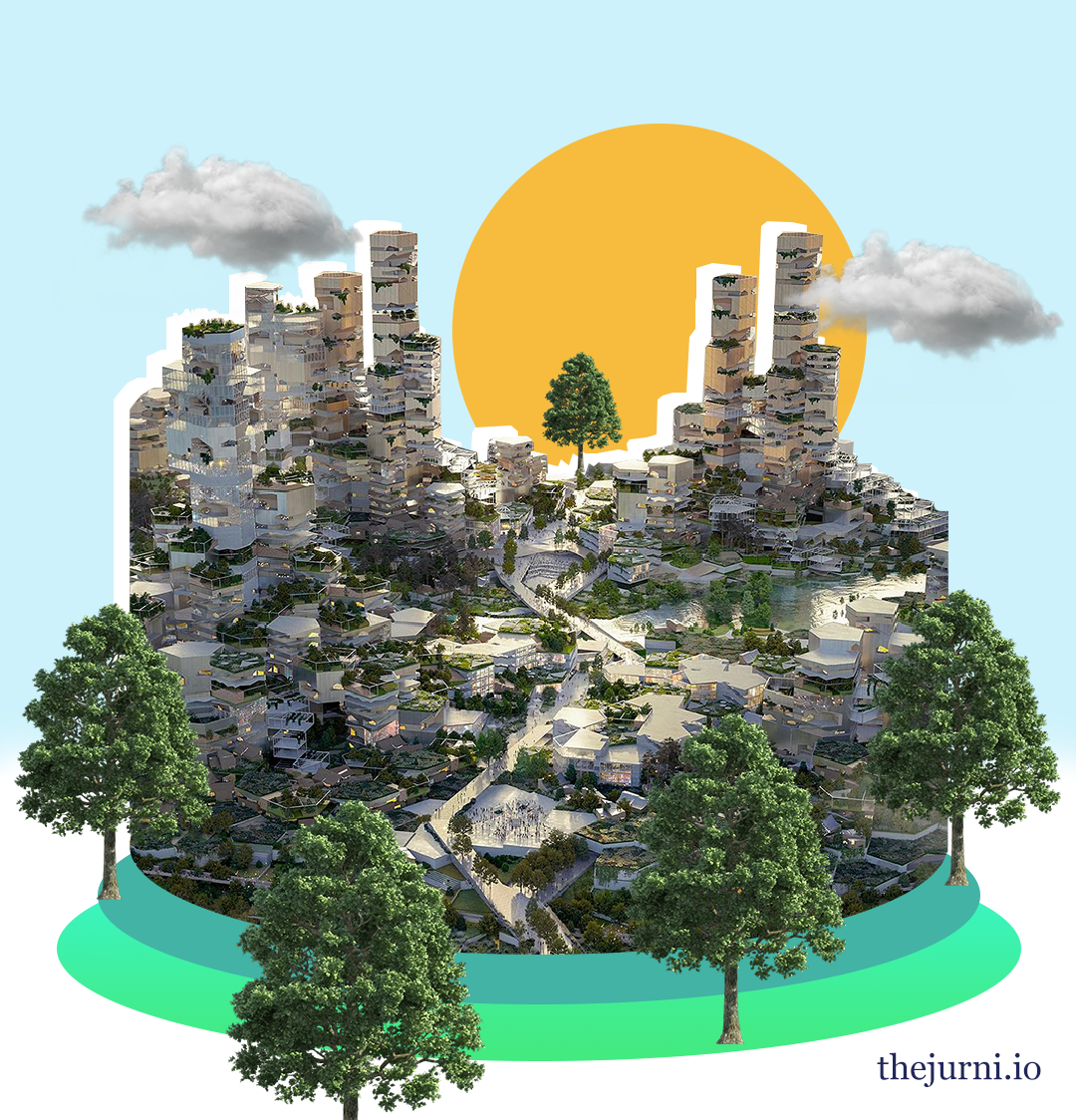
Natural Instinct
What would the world look like a few decades from now? While science fiction never fails to add to our already rich imaginations (think: The Creator), things might take a different turn when it comes to urban design, where the focus will primarily be on sustainability. This means more green zones, prioritising eco-conscious building material and an emphasis on recycling. But what would that result in? And would bigger cities become obsolete, as per popular predictions?
Cities will continue to exist, but might look vastly different
Cities are already home to 56% of the world’s population, which is expected to double by 2050. And this need will result in reimagining them. “The truth of it is that cities are living organisms, they alter and change… and they’re unbelievably resilient.” Mary Rowe, president and CEO of the Canadian Urban Institute, told Vox. Across North America, giant office buildings will cease to exist and might be used for housing (given the rising crisis). Downtowns will diversify. Public health and green spaces will take priority.
More focus on community building and nature
RIOS recently presented the Hyper-Abundant City plan at the Seoul Biennale of Architecture and Urbanism. It reimagines the future of Apgujeong, a neighbourhood in Seoul, to find a solution to urban flooding. They proposed the cultivation of ecological plots to allow for gradual evolution over time. Mexico’s Smart Forest City is another great example. The metropolis would reportedly contain 7.5 mln plants and will be based on the area’s Mayan heritage and its relationship with the natural world.
Newer and smarter cities
Urban population might double, but not necessarily in existing cities and towns. Newer cities, with effective environmental initiatives, are likely to sprawl. And they might look very different from what we imagine a city to be. For instance, Saudi Arabia’s ‘The Line’ is set to become a 100 mile long linear city sans cars and with high-speed autonomous transit.
And this means…
The definition of an ‘urban area’ might change. It might no longer be about concrete jungles, speeding cars, or even a higher population. Instead, it’ll shift to living in sync with nature while equipping societies with modern technology in the most sustainable way possible.
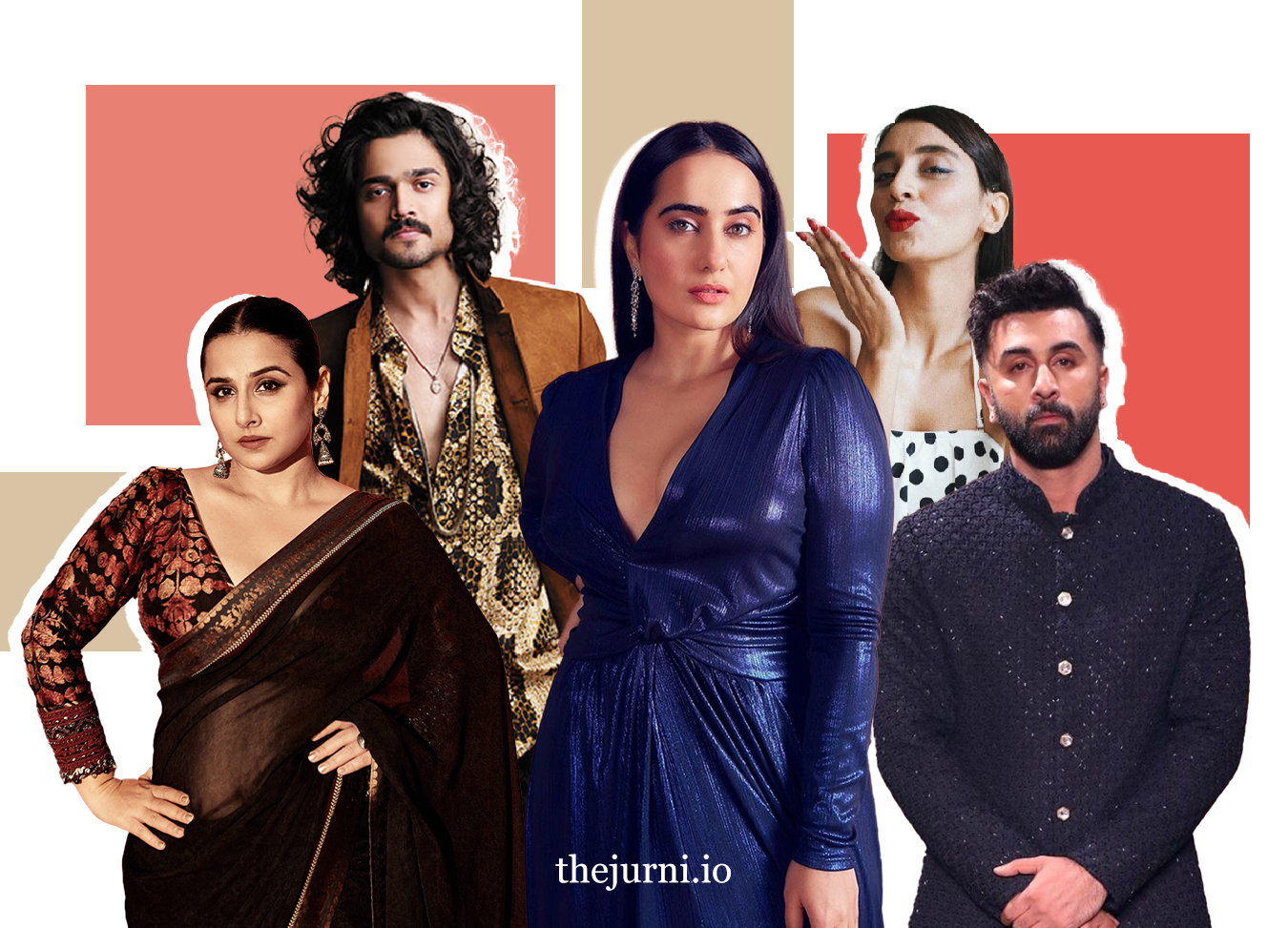
More Than Influential
Thank You For Coming, which recently premiered at the Toronto Film Festival (TIFF), releases in theatres today. While it’s too soon to say whether the film, directed by Karan Boolani, will be successful in throwing light on female sexuality with the kind of nuance the subject deserves, we could not help but notice the interesting cast.
From Kusha Kapila and Dolly Singh to Shibani Bedi, it has its fair share of ‘influencers’. Which brings us to the question: has social media established itself as an alternative platform for aspiring actors? More importantly, has there been a shift in the way people are being cast in Bollywood?
The number game seems to be gaining the upper hand
Influencers have become a critical part of the marketing strategy in most industries, and Bollywood is following suit. People with celebrity status on social media are being cast on the big screen based on the potential benefits they can bring to a project. At the same time, seasoned actors are being questioned on their following – an issue actors Vidya Balan and Huma Qureshi had raked up last year.
Where does this leave the question of fame?
Influencers making their way into Bollywood is one thing, but actors being rejected for not having enough followers is another. Until now, it was an actor’s on screen presence and performance that got them followers and not the other way around. With influencers gaining celebrity status, that seems to be changing. Though, even today, the chances of people recognising and cheering for say, Ranbir Kapoor (who is not on social media) walking down the street, is way higher than expecting a similar reaction for Bhuvan Bam (who has 17 mln followers on Instagram).
So are we to witness more influencers stepping into an actor’s shoes?
Though influencers are regularly being cast in films and shows off late – from Anubhav Singh Bassi in Tu Jhooti Main Makkaar to Kusha Kapila in Masaba Masaba, their roles (for the most part) remain limited and similar to their online personas. So, even as Bollywood’s way of casting people may be shifting, the larger question remains – has the perception of talent changed in the industry or is this yet another phase?
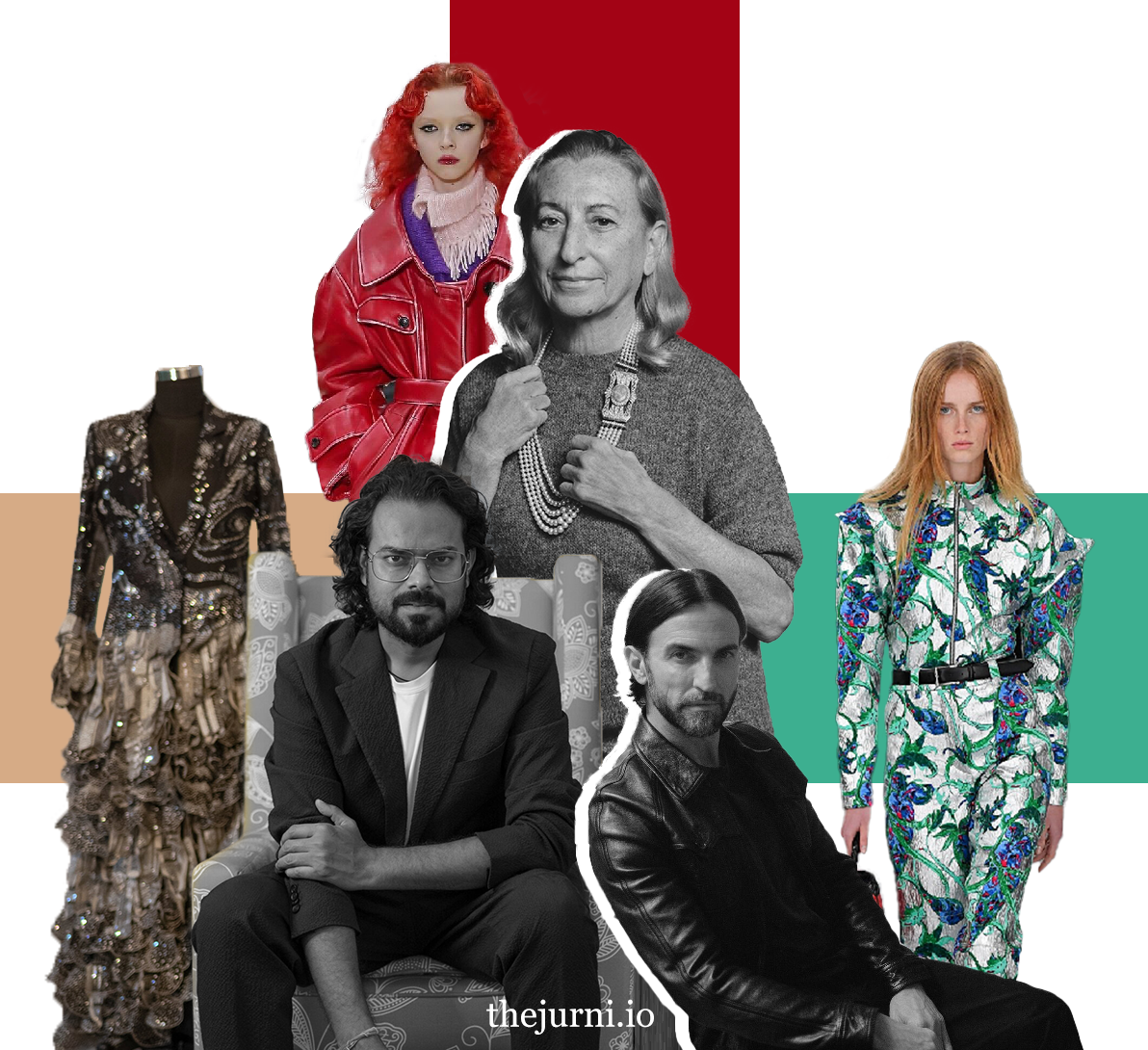
Quiet is the New Loud
Remember when designer labels proudly displayed their names and logos on their products – from clothing to accessories – and so many wore them with even more pride? (who else wishes they had listened to that one friend trying to explain how tacky this looked even back then?)
Well, a reverse trend has been gaining popularity this season, especially with the recently concluded Paris Fashion Week. Conspicuous consumption is passé, with quiet becoming the new loud in fashion – and ‘quiet luxury’ the ongoing trend.
What went on at the Paris Fashion Week?
Besides proving to be a global stage for Indian fashion designers, with the launch of Rahul Mishra’s new label AFEW (and Aishwarya Rai’s moment with Kendall Jenner), minimalism got its revenge on maximalism. Dopamine dressing was replaced by subtlety with an increased emphasis on ‘wearable’ clothes and minimal makeup (Pamela Anderson definitely set an example). Overall, a restrained approach to fashion seems to be settling in, although some designers would disagree.
Pragmatism dominated New York as well
The New York street style collection was more about dealing with the heat wave and clothes to make it through the day cool and collected. From big, boxy button-downs that let in a little breeze to the understated Mary Janes, it was all about comfort. Neutral tones like chocolate, camel, and espresso dominated the ramp. Pleated skirts also made a comeback.
Economic climate is a factor
For long, fashion weeks have marked two ends of the spectrum – one that is for a more niche audience (and exorbitantly expensive) and the other has been street style (not always pragmatic). With more focus on timelessness, affordability, and comfort without compromising on quality, the gap seems to be closing. And a lot of it has to do with the current economic climate.
So, what can we expect?
High fashion becoming more accessible. A Y2K-influenced mood in style translating into subtlety and timelessness and an increased focus on making clothing ergonomic. Essentially, fashion is set to broaden its niche audience.
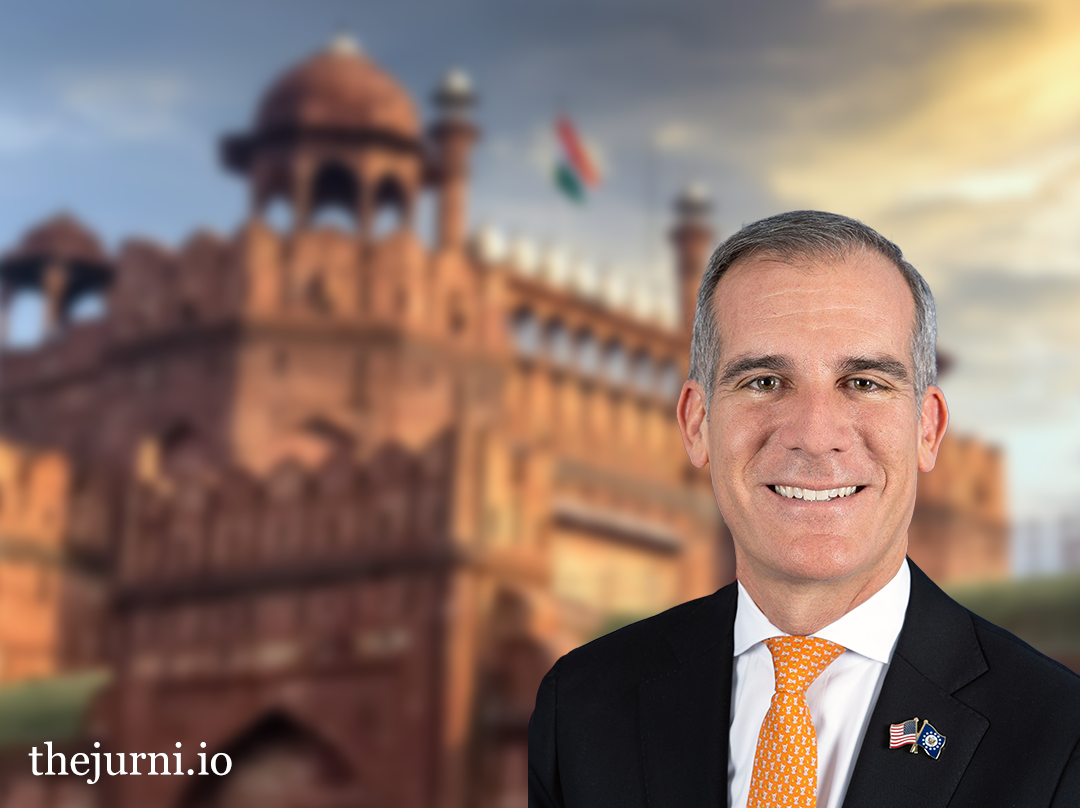
India Dreamin’: US Ambassador Eric Garcetti on India’s Unlimited Potential
When the US Ambassador to India, Eric Garcetti, visited the country for the first time as a teenager in the 1980s, he immediately fell in love with it. India’s “warmth, cultural heritage, and amazing people” brought him back for a visit again in the 1990s, and many times thereafter.
Though the “trappings and technology” may have changed since his earlier visits, “I’ve also been impressed with how much has remained the same,” he notes. “That incredible richness and vitality is the same as it’s always been.”
It is perhaps these qualities that have evoked a certain zeal in him for India’s generation on the rise. “I think India’s potential is limited only by its aspiration… One of my key goals as US Ambassador to India is to create opportunities for this generation to achieve this potential,” he told us in an exclusive interview.
Catch our conversation with the Ambassador below, where we discuss everything from how he plans to achieve this goal to the Indian cities he is most excited to explore.
India is a nation with one of the largest millennial as well as diasporic populations in the world. What kind of influence are we likely to see this cohort have on the global stage?
I think India’s potential is limited only by its aspiration. Today’s rising generation is stepping into a world of unlimited possibility, as India works with the United States and with partners all around the world to confront the 21st century’s most urgent challenges. The stakes are high, so we need to get this right, but the potential to achieve world-transforming advances has never been stronger.
One of my key goals as US Ambassador to India is to create opportunities for this generation to achieve this potential. We’re working with partners in India and the United States to expand opportunities for a world-class US education; to strengthen supply chains on cutting-edge technology; and to increase deployment of clean, green energy, to protect the planet for future generations.
How is this different from what you encountered during your initial visits to India in the 1980s?
The India of today is different in many ways from that of the 1980’s – after all, not many people back then might have imagined the country landing a spacecraft on the dark side of the moon – but I’ve also been impressed with how much has remained the same.
I first came here when I was 14 years old, and fell in love with the country’s warmth, cultural heritage, and amazing people. I returned in 1990, and many times thereafter, and each time fell in love all over again. The trappings and technology may have changed, but that incredible richness and vitality is the same as it’s always been. Today, I am still filled with wonder as our two countries together write the next chapter of our shared journey.
Last month, you had announced that the US would issue a record number of visas in 2023, while also stating that the US sees India as the “most important country in the world”. As India’s largest newsletter on travel and worklife, we are keen to know the travel and career opportunities our readers can expect in the near future?
The ties between our people are stronger than ever. As we wrap up another record-breaking year for student, employment-based, and immigrant visas, I’ve been blown away by the stories people have shared about their US experiences. Our Embassy and Consulates are working diligently to open the door to even greater opportunities next year!
In your opinion, what is the most underrated Indian food/breakfast item?
Spicy food – anything with chilies. And anything you can eat with your hands. I’m half Mexican, so we eat with tortillas. That’s the way you experience food – with your fingers.
As The Jurni believes you are what you read, which book(s) would we find on your nightstand right now?
Chip War: The Fight for the World’s Most Critical Technology by Chris Miller and The Golden Gate by Vikram Seth.
In the spirit of our ethos – “stay curious; never stop seeking” – which Indian city are you most keen to explore next?
Two – can’t wait to get to Pushkar, Rajasthan and Kisama, Nagaland.
Who is your favourite actor/singer/artist from India or the Indian diaspora?
Sharmila Tagore, Shah Rukh Khan, Mindy Kaling, Norah Jones, A.R. Rahman, and Zakir Hussain
An unexpected similarity you’ve observed between Americans and Indians?
We dream the same dreams. We strive for the same ambitions. And we get that same breathless look on our faces when our sports team pulls it out to clinch the match at the last minute.
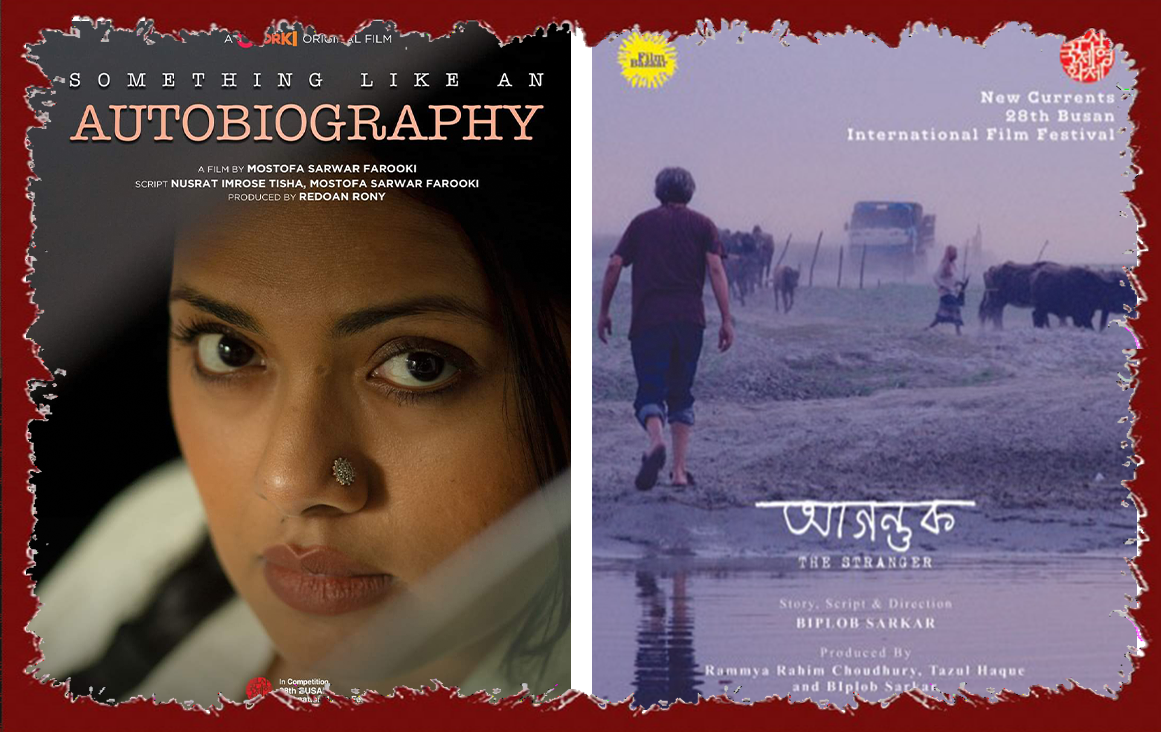
Cinema’s Emerging BFFs
If we ask you to think about a film, say a rom-com based in Korea, would you be immediately able to picture it? Now, let’s change the location to Bangladesh. Would the image be as clear? One of Asia’s biggest film festivals – the Busan Film Festival or BFF – concludes today after screening some of the most thought-provoking films of the year. From Korean Director Park In Je’s fantasy drama Moving, which walked away with several awards, to Hansal Mehta’s crime drama Scoop, which reigned supreme from the Best Asian TV Series category, the range was as diverse as it was captivating.
But more interestingly, it helped us notice the less visible players in the global cinematic landscape – like Bangladeshi and Nepali cinema. So, this National Cinema Day, we thought we’d shine the spotlight on our talented neighbours and celebrate their contribution to world cinema while exploring what’s changed.
Universal themes rooted in local narratives
Be it Bangladesh's Something Like An Autobiography which confronts themes of pregnancy alongside societal and political pressures on celebrities, or Where The Rivers Run South from Nepal, which tackles the issues of migrant labourers and the patriarchy — themes that successfully transcend national borders and are very relatable. At the same time, the films are also deeply rooted in their local milieu, giving us ample occasion to explore and understand the geographical, political, and cultural context of a story.
Bolder storylines
These films are not just tackling certain issues head on, but are experimenting with bold and eccentric themes. For instance, another Bangladeshi film, Agantuk or The Stranger, which was also screened at BFF, explores matters of familial relationships and burgeoning sexuality. On the other hand, Nepal's A Road To A Village is the story of how a family from a remote village grapples with its new reality after gaining access to city life.
So can we expect more in the near future?
Definitely. Just like this year’s BFF proved that all ‘superheroes don’t need to come from North America’, it also demonstrated that good cinema can come from any part of the world. But it will need our support and encouragement. After all, a show without an audience is not much of a show.
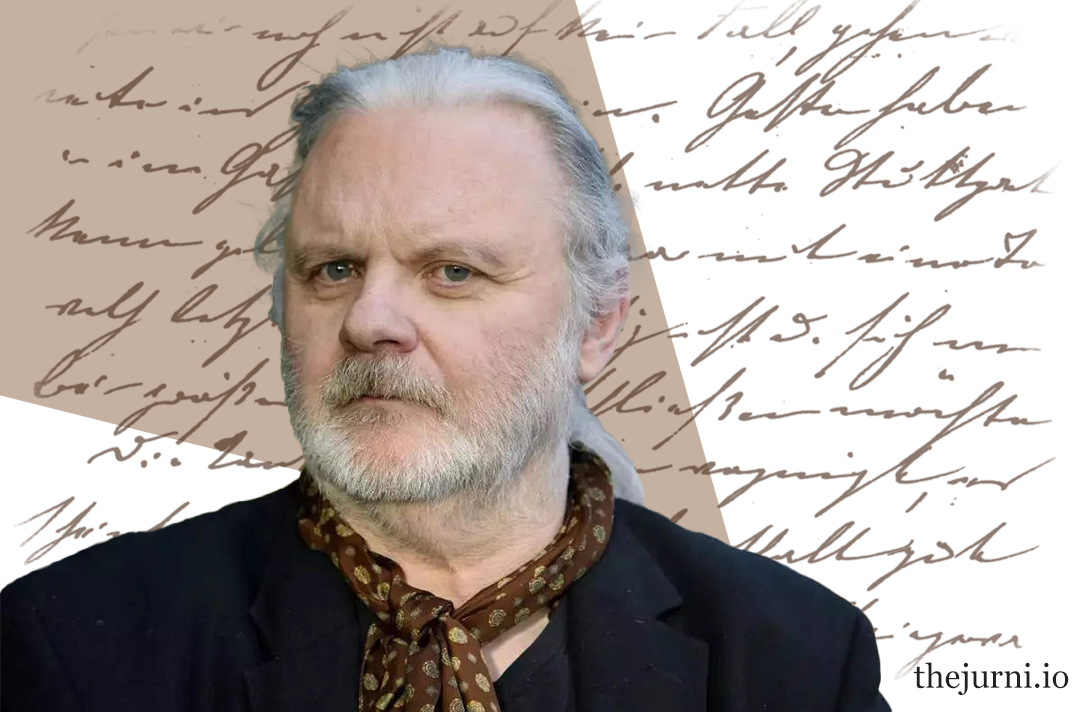
Nynorsk’s Nobel Knight
A curious aspect to this year’s Literature Nobel laureate, Jon Fosse, is that the Norwegian author writes in Nynorsk, a rural language used by just 10% of the Norwegian population, though understandable to most of Fosse’s countrymen. But perhaps this is the very reason why Fosse has been awarded this year.
An author awarded for his “innovative plays and prose which give voice to the unsayable”, Fosse is known as a writer with a sparse and minimalist style that seeks to push the boundaries of what can be achieved with experimentation. Dream of Autumn (1999), which shot Fosse to fame outside Norway, is an exercise in bending space and time in theatre.
In case you feel that is too avant-garde, Fosse’s magnum opus, Septology, is a three-volume tome that consists of a single sentence. The narrative follows two painters who share the same name and are neighbours, but do not interact. The book’s third volume was nominated for the 2022 International Booker.
The bleak and existential nature of his subjects, as well as his voice, has led to Fosse being anointed ‘the 21st century Beckett’ by Le Monde (His 1996 play, Someone Is Going To Come, is based on Waiting For Godot). With an astonishing oeuvre consisting of 40 plays, over 70 novels, and a multitude of short stories, this introspective writer is likely to overtake his former student, Karl Ove Knausgård, as the best known Norwegian writer.